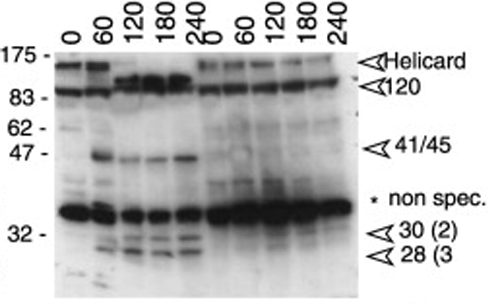anti-MDA5 (mouse) pAb (AL180)
Product Code:
AG-25B-0001V
AG-25B-0001V
Antibody Clonality:
Polyclonal
Polyclonal
Regulatory Status:
RUO
RUO
Target Species:
Mouse
Mouse
Shipping:
Blue Ice
Blue Ice
Storage:
-20°C
-20°C
No additional charges, what you see is what you pay! *
| Code | Size | Price |
|---|
| AG-25B-0001V-C100 | 100 ug | £280.00 |
Quantity:
Prices exclude any Taxes / VAT
Stay in control of your spending. These prices have no additional charges, not even shipping!
* Rare exceptions are clearly labelled (only 0.14% of items!).
* Rare exceptions are clearly labelled (only 0.14% of items!).
Multibuy discounts available! Contact us to find what you can save.
This product comes from: Switzerland.
Typical lead time: 7-10 working days.
Contact us for more accurate information.
Typical lead time: 7-10 working days.
Contact us for more accurate information.
- Further Information
- Documents
- References
- Show All
Further Information
Alternate Names/Synonyms:
Helicard; Melanoma Differentiation-associated Gene 5
Concentration:
1mg /ml
EClass:
32160000
Form (Short):
liquid
Formulation:
Liquid. In PBS containing 0.02% sodium azide.
Handling Advice:
Avoid freeze/thaw cycles.
Immunogen:
Recombinant mouse MDA5 (aa 2-208).
Long Description:
Polyclonal Antibody. Recognizes mouse MDA5. Source: Rabbit. Applications: IHC, WB. Liquid. In PBS containing 0.02% sodium azide. RIG-I and MDA5 are highly conserved helicases involved in the innate immune response to virus. MDA5, upon interaction with intracellular dsRNA (produced during viral replication), triggers a transduction cascade involving MAVS/IPS1, which results in the activation of NF-kappaB, IRF3 and IRF7 and the induction of the expression of antiviral cytokines such as IFN-beta and RANTES (CCL5). MDA5 is widely expressed at low levels. The expression is detected at higher levels in placenta, pancreas and spleen and barely in brain, testis and lung. Genetic variation in MDA5 is associated with diabetes mellitus insulin-dependent type 19 (IDDM19). A multifactorial disorder of glucose homeostasis that is characterized by susceptibility to ketoacidosis in the absence of insulin therapy.
NCBI, Uniprot Number:
Q8R5F7
Package Type:
Plastic Vial
Product Description:
RIG-I and MDA5 are highly conserved helicases involved in the innate immune response to virus. MDA5, upon interaction with intracellular dsRNA (produced during viral replication), triggers a transduction cascade involving MAVS/IPS1, which results in the activation of NF-kappaB, IRF3 and IRF7 and the induction of the expression of antiviral cytokines such as IFN-beta and RANTES (CCL5). MDA5 is widely expressed at low levels. The expression is detected at higher levels in placenta, pancreas and spleen and barely in brain, testis and lung. Genetic variation in MDA5 is associated with diabetes mellitus insulin-dependent type 19 (IDDM19). A multifactorial disorder of glucose homeostasis that is characterized by susceptibility to ketoacidosis in the absence of insulin therapy.
Purity:
>95% (SDS-PAGE)
Source / Host:
Rabbit
Specificity:
Recognizes mouse MDA5.
Transportation:
Non-hazardous
UNSPSC Category:
Primary Antibodies
UNSPSC Number:
12352203
Use & Stability:
Stable for at least 1 year after receipt when stored at -20°C.
Documents
References
Overexpression of Helicard, a CARD-Containing Helicase Cleaved during Apoptosis, Accelerates DNA Degradation: M. Kovacsovics, et al.; Curr. Biol. 12, 838 (2002) | Distinct and complementary functions of MDA5 and TLR3 in poly(I:C)-mediated activation of mouse NK cells: S. McCartney, et al.; J. Exp. Med. 206, 2967 (2009) | HOIL1 Is Essential for the Induction of Type I and III Interferons by MDA5 and Regulates Persistent Murine Norovirus Infection: D.A. MacDuff, et al.; J. Virol. 92, e01368 (2018)



